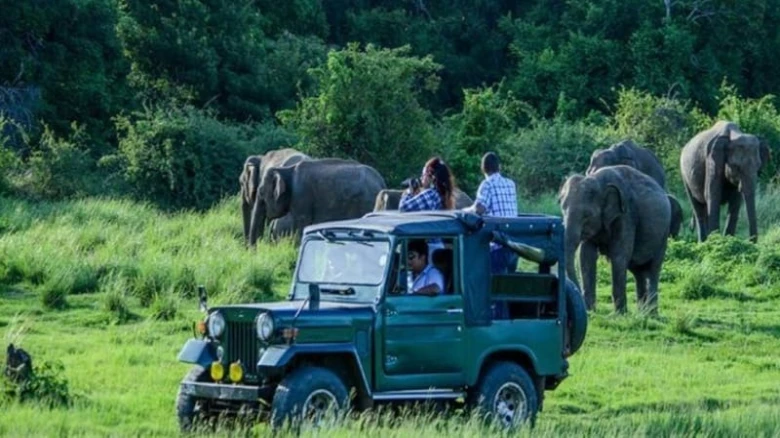Regional

Kaziranga has cemented its status as a premier destination for both families and wildlife enthusiasts alike...
Digital Desk: In a landmark achievement, the Kaziranga National Park & Tiger Reserve, nestled in the picturesque landscapes of Assam, witnessed its highest tourist footfall in the financial year 2023-24, with a staggering 3.27 lakh visitors.
Renowned for its awe-inspiring vistas, diverse wildlife, and iconic species such as the one-horned rhinoceros, Kaziranga has cemented its status as a premier destination for both families and wildlife enthusiasts alike.
The influx of tourists, totaling 3,27,493, comprised 3,13,574 domestic visitors and 13,919 international travelers, generating revenue amounting to Rs 8,81,84,161. This surge in tourism isn't confined to a single administrative division but is spread across the park's three divisions: Eastern Assam Wildlife Division, Bishwanath Wildlife Division, and Nagaon Wildlife Division.
Comparing the statistics from the preceding year, it's evident that Kaziranga's popularity has soared. In 2022-23, the Eastern Assam Wildlife Division saw 3,10,458 tourists, while Nagaon and Bishwanath recorded 2,610 and 1,728 visitors, respectively. However, in 2023-24, these numbers escalated significantly, with 3,20,961 tourists in Eastern Assam, 3,484 in Nagaon, and 3,048 in Bishwanath.
The post-monsoon tourism season, which commenced in mid-October 2023, offered an array of attractions including jungle and elephant safaris, cycling trails in Karbi-Anglong, and trekking routes in Panbari forest range and Chirang. Additionally, ethnic restaurants like Choran-Ahem and Ajun Ukum gained popularity, alongside Bwisag-Na, a women-led venture at Burachapori.
Moreover, the introduction of new routes for boat safaris, dolphin watching, and jeep and cycling circuits at Panpur and Burachapori further enriched the visitor experience. Kaziranga's growing appeal underscores its significance as a beacon of wildlife conservation and sustainable tourism in India.
Leave A Comment